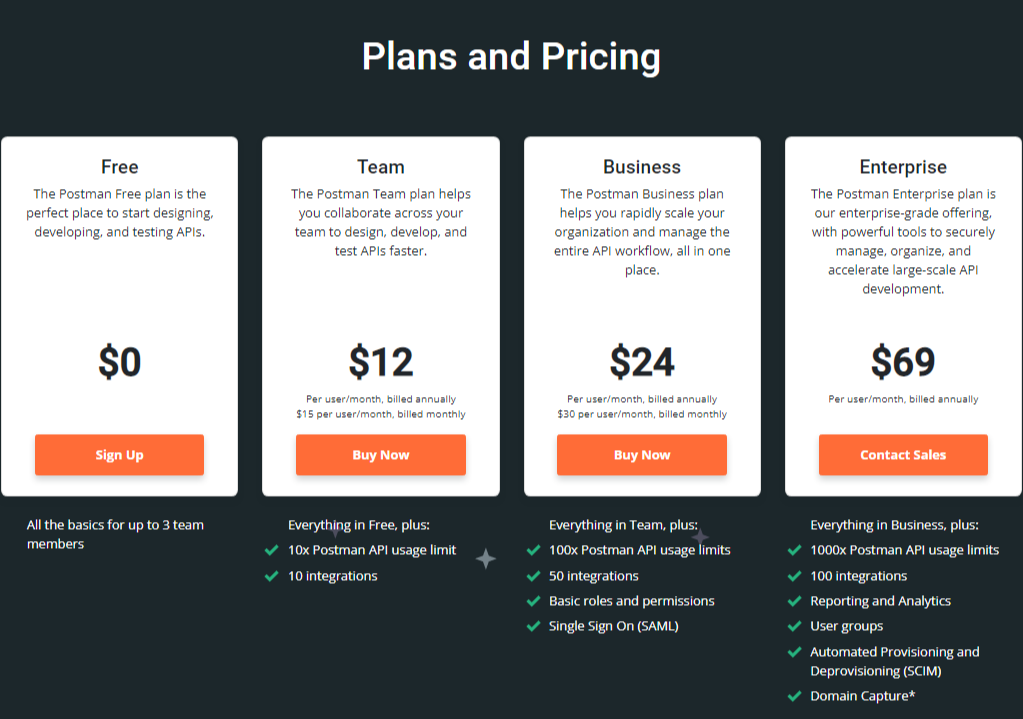The Postman pricing section is effective for several reasons:
1. Clear Hierarchy and Visual Appeal:
- Distinct Tiers: The “Free,” “Team,” “Business,” and “Enterprise” tiers are clearly labeled and visually separated.
- Progressive Pricing: The pricing clearly increases with each tier, reflecting added features and capabilities.
- Consistent Layout: Each tier follows a consistent layout with descriptions, pricing, features, and call-to-action buttons.
- Visual Cues: Checkmarks are used to indicate included features, enhancing readability.
- Clear Headings: The headings clearly indicate the purpose and target audience of each tier.
- Pricing Clarity: Both annual and monthly pricing options are presented for the paid tiers.
- Call to Action Buttons: The “Sign Up,” “Buy Now,” and “Contact Sales” buttons are visually distinct and clearly labeled.
2. Value-Based Differentiation:
- Targeted Descriptions: Each tier has a concise description that clearly identifies the target customer and their needs.
- Feature Progression: The “Everything in [Previous Tier], plus:” structure clearly highlights the added value of higher tiers.
- Specific Feature Differentiation: Features like “100 integrations,” “Reporting and Analytics,” and “Automated Provisioning and Deprovisioning (SCIM)” differentiate the higher tiers.
- Quantitative Differentiation: The differences in Postman API usage limits provide clear quantitative differences.
- Free Option: The “Free” tier offers a starting point for individuals and small teams.
3. Transparent Pricing:
- Clear Pricing Information: The monthly per-user prices are clearly stated for each tier, with both annual and monthly billing options.
- Enterprise Contact: The “Enterprise” tier uses “Contact Sales,” indicating a tailored solution for larger clients.
4. Addressing Different User Needs:
- Individuals/Small Teams: The “Free” tier caters to individuals and small teams with basic needs.
- Collaborative Teams: The “Team” tier is designed for teams needing collaboration features.
- Scaling Businesses: The “Business” tier caters to businesses needing to scale their API workflows.
- Enterprise-Grade Needs: The “Enterprise” tier caters to organizations needing advanced features and security.
5. Strategic Use of Information:
- Benefit-Oriented Features: Features like “100 integrations,” “Reporting and Analytics,” and “Automated Provisioning and Deprovisioning (SCIM)” highlight the value of each tier.
- Clear Call to Action: The call-to-action buttons provide clear paths for action.
- Feature Lists: The feature lists clearly show the differences between the tiers.
- Concise Descriptions: The descriptions are brief and to the point, making it easy to understand the purpose of each tier.



